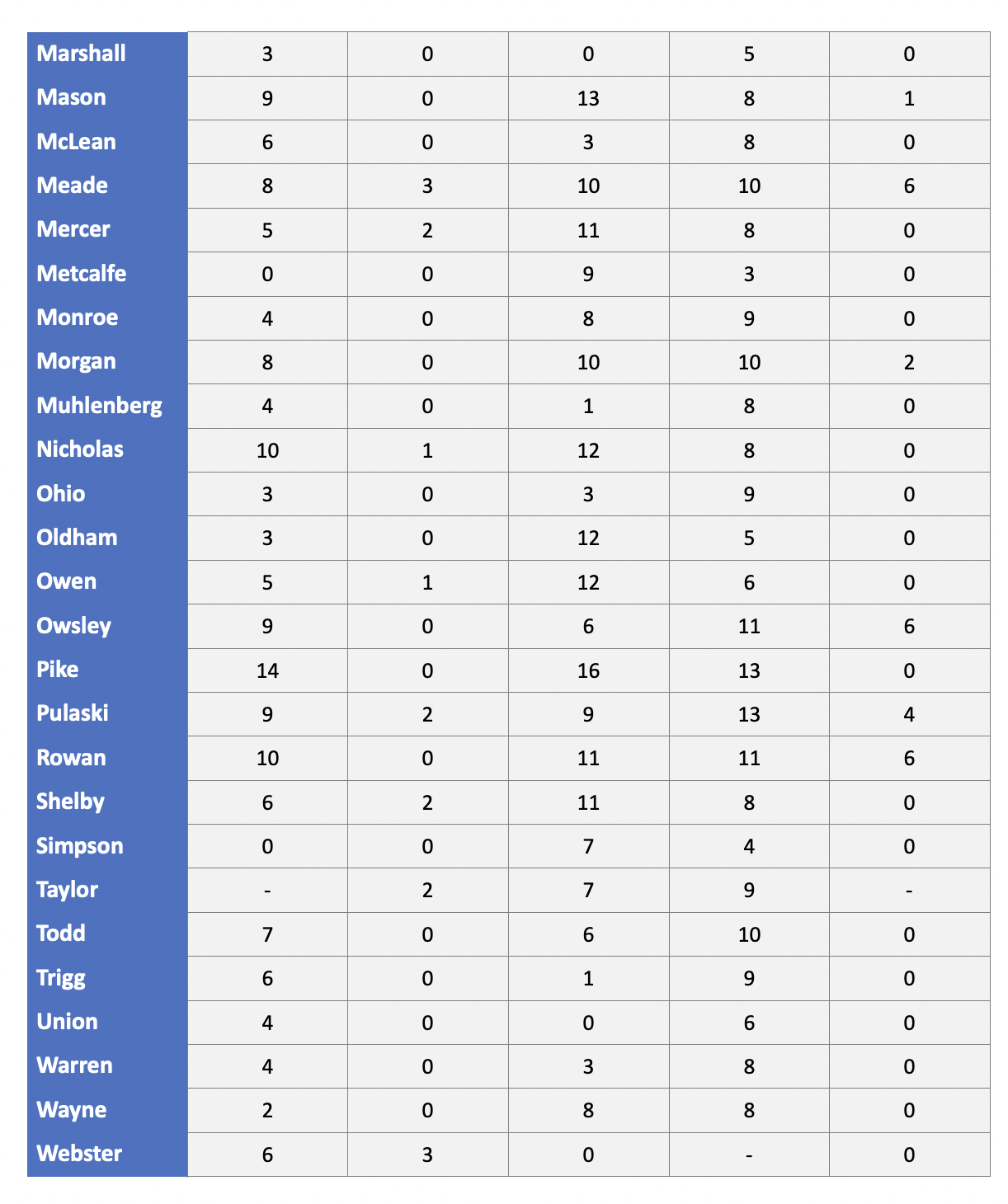March 15 and 17-21 Temperatures MAY Damage Wheat Crop
Carrie Knott & Conner Raymond
This winter has quite possibly been the warmest in recorded history for Kentucky. We have been lucky that we have not had a year with excessive wheat growth and development due to our environmental conditions (presented in a previous article and available online). But, there are still many acres of wheat in Kentucky that are jointed (Feekes 6) and possibly some pockets in the state with wheat crops that have two nodes (Feekes 7).
On March 15 and again from March 17 to 21, temperatures plummeted across the state. Minimum air temperatures dropped into the teens and low 20°F across the entire state overnight from March 19 to 20 (Table 1). Clinton, Cumberland, Grayson, Harrison, Lewis, Meade and Taylor counties all dipped to about 13°F while Ballard, Boone, Calloway, Campbell, Crittenden, Fulton, Henderson, Mason, Metcalfe, Oldham, Simpson and Union counties all remained in the 20s.
For wheat fields that are Feekes 5 or less advanced, these temperatures should not harm the wheat. The growing point was still below the soil surface and well protected by the soil temperatures. This is evidenced by soil surface temperatures that we recorded at University of Kentucky’s Research and Education Center in Princeton (Figure 1). Throughout this period, soil temperatures remained above 31°F.
For wheat fields that were at Feekes 6 or later, there is a real concern that damage may have occurred. The national rule of thumb is that wheat at this growth stage would be damaged when temperatures are less than or equal to 24°F for 2 or more hours. Although there are certainly more factors that contribute to severity of freeze damage than simply duration of a threshold temperature (many of which we are investigating), this is still the most widely accepted mechanism to predict wheat freeze damage and ‘trigger’ a need to scout fields for damage.
There were five of the 63 Mesonet locations we examined that temperatures dipped to or below 24°F for all five nights: Butler, Cumberland, Harrison, Meade, and Pulaski. There were also five locations that temperatures dropped to 24°F or less for only one night: Calloway, Campbell, Christian, Crittenden, and Fulton. So scouting for freeze damage in wheat is going to be essential to understand if and how this freeze could impact final yield (Figure 2).
When scouting for freeze damage in wheat, it is important to remember that a minimum of four to five days of good growing conditions (high temperatures exceeding 40°F) are needed before damage becomes visible. Holding to that standard, Saturday March 25 would be the earliest scouting should occur, but it is recommended to wait until Monday March 27 to ensure plants have plenty of time to grow and more time for signs of freeze damage to develop if it has occurred.
Even if freeze damage is found, this does not immediately indicate that final grain yield will be impacted. Wheat has a great ability to redistribute its resources to living tillers and therefore compensate for primary stems and tillers that may be lost in the freeze. This can result in little to no yield impact (Figure 2). For more information on scouting for freeze damage and estimating yield impact of freeze damaged wheat refer to AGR-253: Identifying Damage and Estimating Yield Reductions following a Spring Freeze in Winter Wheat.
Figure 1: Soil surface temperatures from 3/15/23 to 3/21/23 at Princeton, KY
Figure 2: Estimated yield loss following spring freezes at different growth stages
Table 1: Minimum air temperatures across available KY Mesonet sites during recent nights of below freezing temperatures.
Table 2: Duration of temperature in hours at or below 24°F for five days with temperatures that could cause wheat freeze damage in Kentucky. Data obtained from KY Mesonet http://www.kymesonet.org/.








